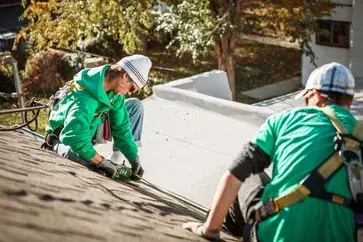Roofing
How to Detect Roof Leak and Locate Its Source Effectively

How to Detect Roof Leak and Locate Its Source Effectively
Detecting a roof leak early saves your home from costly damage. To detect roof leak issues, start by spotting signs like water stains or mold. However, water can travel far from the actual leak source, so proper detective work is necessary. This guide helps you locate leaks quickly and prevent further harm.
Step 1: Inspect the Attic to Detect Roof Leak Evidence
Begin inside your attic with a flashlight. Look closely at the underside of the roof. Watch for dark or damp spots on the roof sheathing. Mold patches often indicate moisture even if the roof hasn’t recently rained. These signs help you detect roof leak points early before damage worsens.
Step 2: Trace Damaged Insulation Back to Leak Source
Insulation near the leak area deteriorates faster than wood. Check for wet, damaged, or discolored insulation. Since water can travel away from the leak point, carefully remove insulation near suspect spots. This helps trace the leak’s path back to its entry point. Always wear gloves and safety gear when handling insulation.
Step 3: Examine Roof Perforations and Vents
Next, look for holes caused by nails or other roof penetrations. These holes often cause leaks. Check around roof vents, skylights, and chimneys where seals may weaken over time. Many leaks originate near these penetrations. Locating these spots will help you detect roof leak sources more accurately.
Step 4: Simulate Rain to Locate the Leak During Dry Weather
If you can’t find leaks during dry weather, simulate rain using a garden hose. One person sprays small roof sections while another watches from the attic. This method reveals leaks by showing where water enters during simulated rainfall. Use this test carefully to detect roof leak locations when natural rain isn’t available.
Step 5: Repair the Leak Promptly
Once you detect roof leak areas, start repairs immediately. Many leaks result from damaged shingles or failing seals and can be fixed with minor repairs. However, if you’re uncomfortable or the damage is extensive, call a professional roofer. Quick action prevents leaks from worsening and protects your home’s interior.
Final Thoughts
Knowing how to detect roof leak early helps protect your home from expensive damage. Follow these steps carefully to find leaks fast and take prompt action. Proper inspection and timely repairs keep your roof strong and your home safe.
Explore more home maintenance news and tips on this website.
